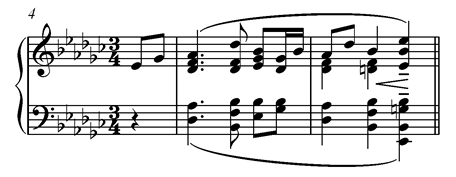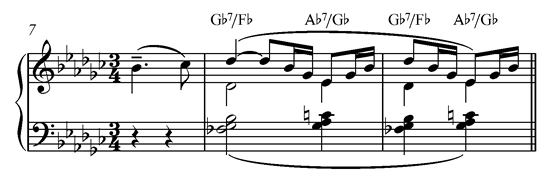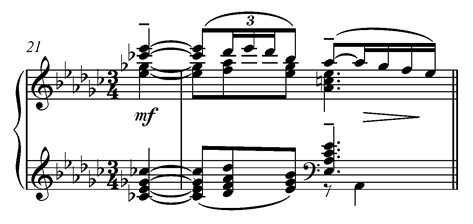La fille aux cheveux de lin - Prelude by Claude Debussy
José Rodríguez Alvira
Traditional chords used in non-traditional context
In his musical language Debussy did not hesitate to use traditional major and minor chords. Yet, he found a way to use them in very original and innovative ways. Some of the aspects that gave this originality was the use of these chords as a way of giving colors without enforcing their traditional harmonic functions.
In measures 5 to 8, Debussy harmonizes a pentatonic melody using majors and minors chords. Not all of the notes used to form these chords are part of the pentatonic scale and even if sometimes we find traditional harmonic relations like dominant - tonic (measure 6, 2nd and 3rd beats), most of the time the chords are used to give color to the melody being harmonized and do not seem to use traditional harmonic relations. It would make no sense to analyze these measures as being in Gb major. The chord that would be the Gb major dominant (measure 5, 1st beat), sounds more like a VII degree of Eb. Finally, Debussy ends the phrase with an Eb major chord.

Robert Ståhlbrand, piano - Piano Society - www.pianosociety.com
In measures 8 and 9, we find two dominant seventh chords that do not behave as dominant chords. These chords are used for the color that they add to the melody:

Robert Ståhlbrand, piano - Piano Society - www.pianosociety.com
Note the parallel movement in these chords. Debussy loved to use parallel movement with chords. Some other examples in this prelude:
Measures 21 - 22, parallel movement of chords in root position (left hand):

Robert Ståhlbrand, piano - Piano Society - www.pianosociety.com
Measures 33-34, parallel movement of majors and minors chords in 2nd inversion:

Robert Ståhlbrand, piano - Piano Society - www.pianosociety.com